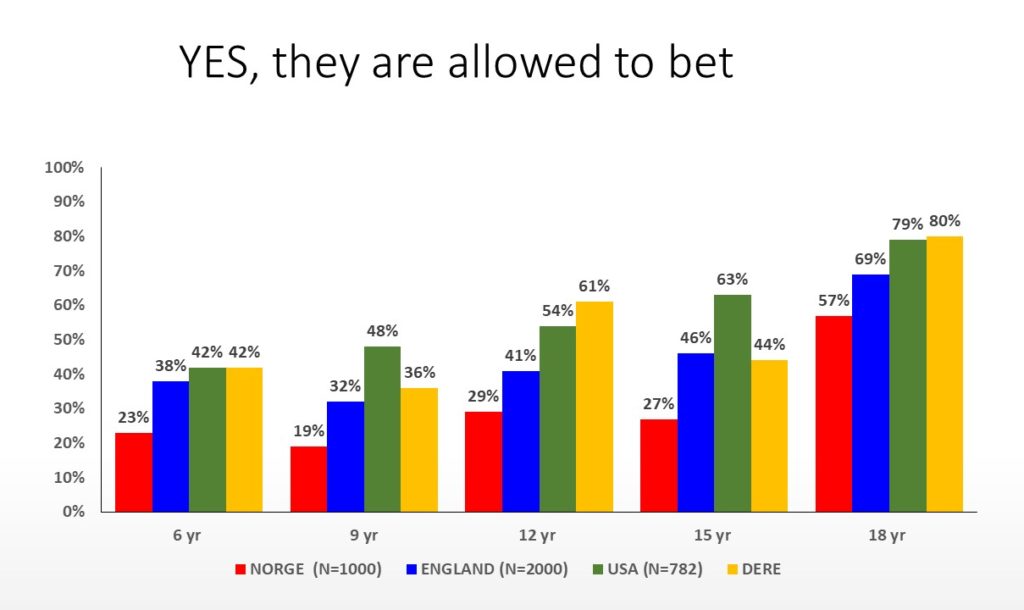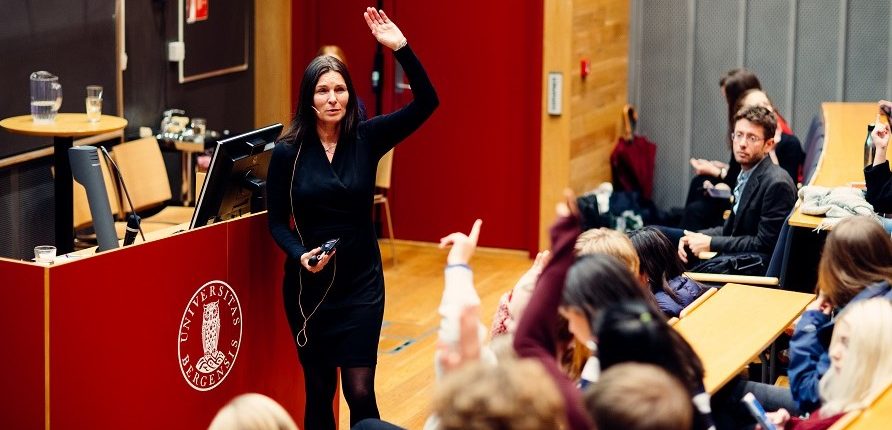LECTURE: Are young Norwegians more or less paternalistic than the majority population? Marit Skivenes conducted a live experiment with high school students.
Do children have the right to decide for themselves? And are children and young people able to decide for themselves? Those were two of the topics Prof. Marit Skivenes raised at a lecture for high school students during the science week Forskningsdagene i Bergen.
Skivenes told the audience that the UN Convention on the Rights of the Child (CRC) states that a child who is capable of forming his or her own views should have the right to express those views freely, and that the views of the child shall be given due weight in accordance with the age and maturity of the child.
But to find out their attitude towards allowing others self-determination in practice, she asked the audience at what age a child is old enough to decide how to use their own pocket money.
Less paternalistic than the majority population

PHOTO: Forskningsdagene i Bergen
Skivenes has together with Profs. Alexander Cappelen and Bertil Tungodden (FAIR – NHH) conducted a study where a representative sample of the population in Norway and England, and a M-Turk sample from the US, were given the following case:
Two 6-year-olds have agreed to bet their weekly pocket money in a dice game. They bet the same amount of money, and they agree that the player who get the highest dice will receive the whole amount. What would you do if you had to decide whether the 6-year-olds should play or not?
In the study, respondents were randomized into different vignettes, each with a different age of the child: 6 years old, 9 years old, 12 years old, 15 years old and 18 years old. At the lecture, Skivenes repeated the experiment with the high school students as respondents.
Overall, the students clearly expressed less paternalistic views than the adult populations in all the three countries. The percentage of the young students who answered that they would allow the betting is shown in yellow. The preliminary findings from the study by Skivenes, Cappelen and Tungodden are also displayed: Norway (red), England (blue) and USA (green).

Norwegians more paternalistic than others
Even though the experiment with the high school students was not strictly scientific, Skivenes still think that the numbers are interesting. She also has an assumption about why there is a difference between the young Norwegians and the majority populations.
– People’s view of children is far more colored by age and their status as children than by a real assessment of their competence, maturity and expressed meaning. Being young themselves, the respondents here are perhaps less prone to decide for others just because they can.
Skivenes notes that especially the difference between the young Norwegians and the Norwegian population as a whole is substantial.
– We have an indication that Norwegians are more paternalistic than others. Perhaps Norwegians have not taken into account the participation rights that put children on par with other citizens in our society. If the views expressed in this experiment is a sign that the young generation is changing, that might be good news for the promotion of Children s Rights in Norway.


